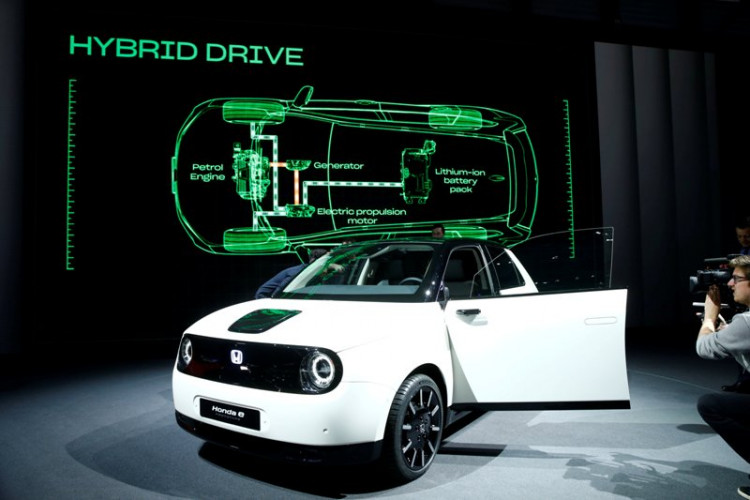The 2020 Honda E Compact SUV has been confirmed to feature rearview cameras instead of mirrors. This was already expected as the prototypes already featured video cameras as its side mirror What was not expected is the Japanese firm's announcement that the rearview cameras will be a standard feature, which means it will be available to the entire range without any additional cost.
Honda has presented a series of images of the side view cameras and from what it looks like, it is already in the final stages of development for the production version of the Honda E. The new Honda E will be the first model of its segment and size that dispensed the conventional side mirrors and instead will mount cameras, since until now it has only been seen in the new and also electric Audi e-tron.
Honda E's rearview cameras are compact and transmit images in real time to the two six-inch screens located inside the vehicle located at both ends of the dashboard. They have been placed ergonomically so that the driver has a comfortable view at all times.
Unlike conventional exterior mirrors, the cameras are integrated into the profile of the 2020 Honda E and do not extend from the wheel arches. In this way, not only the visibility is improved, but the aerodynamic drag is reduced by around 90% compared to the usual exterior mirrors, a gain of 3.8% which contributes to the efficiency and improves the autonomy.
In addition, the design of the supports in which the cameras are housed prevents water droplets from forming on the lenses thanks to a water-repellent coating on the surface. Another advantage is the significant decrease in wind noise that is normally generated by exterior mirrors at high speeds.
The driver of the 2020 Honda E will be able to choose between the normal view or the panoramic view to expand the field of vision much more than the normal exterior mirrors reflect; the blind spots are reduced by 10% with the normal view mode and by about 50% with the panoramic one. It also offers improvements when selecting the reverse gear, with a lateral vision on the screens and the camera angle has been optimized for greater visibility.
The brightness levels of the interior screens are adjusted automatically depending on the lighting conditions, especially in adverse weather conditions, in low light and at night, without glare or brightness. The brand has carried out tests on all types of ambient light conditions so that it can always be observed naturally by the driver.
The Honda E compact electric car is part of the brand's strategy, a goal that by 2025 every car it sells includes some type of electrified technology. It is expected that the Honda E will be very competitive as it is made compact for the city and will have a range of more than 200 km, as well as a fast charge that provides a range of 80% in just 30 minutes.
The final version of the 2020 Honda E with all the details, including the price, is expected to be announced in the upcoming months with an official launch by the end of the year, but reservations have already commenced in the UK, France, and Norway through Honda’s UK website.





